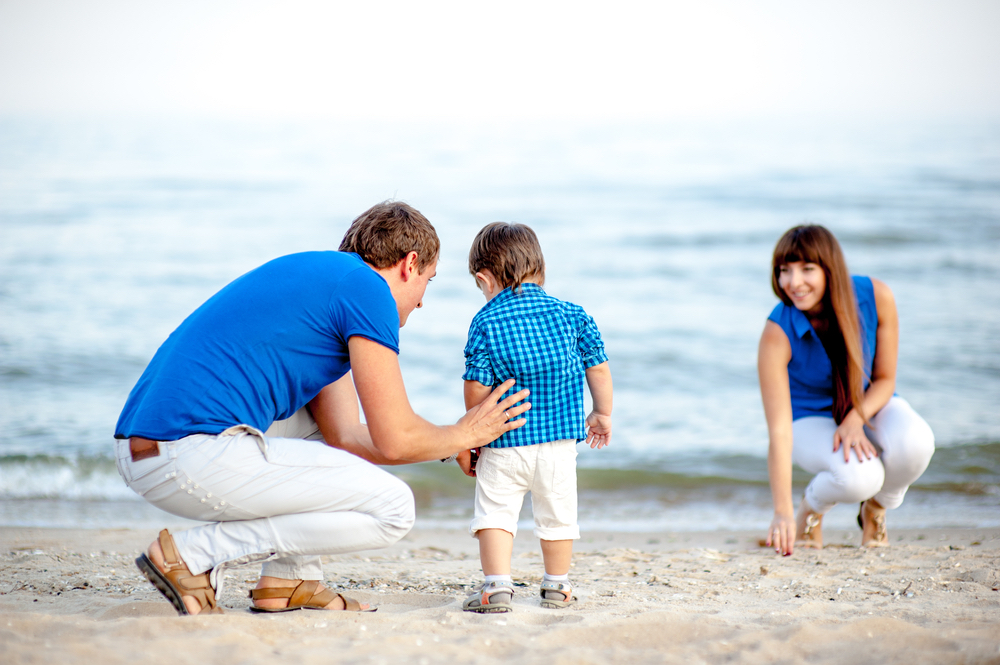
You know to watch out for stingrays and sharks, but do you know about the bacteria and viruses you might encounter?
The beach is a popular summer playground for humans, but pathogens like to hang out there, too, and can infect you, if you’re unaware of them. These bacteria, viruses and microorganisms can get into the water through runoff after rainfall, untreated sewage and even from other beachgoers. They’re also found on the sand.
Although most people who go to the beach are perfectly fine afterward, you should know what to look out for, especially if you have young children, are elderly or have a weakened immune system. Here’s what might be there and how you can stay healthy.
Sandcastles may not be all child’s play.
The germs causing gastroenteritis, the most common illness people get at the beach, may lurk in the sand. That means seemingly innocent activities, like being buried in the sand or digging into it with your hands, might put you at risk. Gastroenteritis causes run-of-the-mill stomach problems, such as nausea, stomachache, vomiting and diarrhea, and can be caused by a virus, bacteria or parasite.
“You can prevent gastroenteritis and other illnesses originating from contaminants in the sand by washing your hands when you leave the beach,” says Rose Taroyan, MD, a family medicine physician at Keck Medicine of USC and clinical associate professor of family medicine at the Keck School of Medicine of USC.
If you get gastroenteritis, you may become dehydrated from vomiting or diarrhea. In that case, be sure to replace the fluids you’ve lost.
Less common, but still potent, are hookworm (Necator americanus) larvae. If the sand is contaminated with fecal matter, it may harbor these larvae. Once mature, the larvae can enter your skin when you walk barefoot on infected sand. “Approximately eight to 21 days after an infection, the larvae will penetrate your lungs, ascend to your throat and then you’ll swallow them,” Taroyan says. “Once the larvae migrate to the small intestine, you may experience gastrointestinal symptoms, such as nausea, diarrhea, vomiting, abdominal pain and increased flatulence.”
There’s an easy way to avoid picking up this infection. If you visit a beach that may be contaminated with fecal matter, or is known to harbor hookworms, don’t walk barefoot in the sand. However, if you do become infected, the condition is easily treated. A doctor will typically prescribe medication for one to three days.
Sand or water may also be contaminated with ascariasis, or roundworms. “Transmission occurs primarily via ingestion of water or food contaminated with Ascaris eggs,” Taroyan says. “Children may acquire the parasite from their hands, and poor hygiene facilitates the spread of infection.” She notes that most patients are asymptomatic, but during the late phase of infection (six to eight weeks after egg ingestion), nonspecific symptoms, such as abdominal discomfort, anorexia, nausea, vomiting and diarrhea, may appear. “At beaches where pets are allowed,” she adds, “the sand may be contaminated with dog feces that contain Toxocara canis, a parasite roundworm.”
The best way to prevent ingesting the parasite is by washing your hands with soap and water — and teaching your children to do the same — before touching any food at the beach. As with hookworms, if you do pick this up, the infection is typically treated within one to three days with drugs prescribed by your doctor.
Walk on the wild side? Think twice.
Walking barefoot can mean increased risk for cuts, which can then serve as a pathway into your body for Staphylococcus (staph) bacteria in water or sand. If the bacteria enter an open cut and colonize, they can cause skin and bone infections, flu- and pneumonia-like symptoms and even toxic shock syndrome.
Staph bacteria can also be lurking on objects, like sports gear, towels and clothing. “Prevention measures include not sharing things with others at the beach,” Taroyan says.
Under rare conditions, common bacteria like staph can turn into necrotizing fasciitis, sometimes called “flesh-eating disease.” This serious infection occurs when the bacteria enter the body through a cut, insect bite or puncture wound and kill the fascia, or soft tissue under the skin that surrounds muscles, blood vessels, nerves and fat. The infection spreads quickly and needs to be treated promptly. Symptoms may begin with severe pain, fever and a red or swollen area of the skin that expands rapidly. If the infection progresses, it can be deadly. If you experience symptoms, seek medical attention immediately. Necrotizing fasciitis can be successfully treated with strong antibiotics and surgery, but timing is crucial.
Smart ways to enjoy your day
There’s no reason to panic if you follow good hygiene and safety procedures at the beach. In addition to the above, if you have an open wound, be sure to keep it covered, and stay out of the water.
“There is also an annual beach report card,” Taroyan says, “that provides reliable and easy-to-understand information about water quality at the beach. The better the grade a beach receives, the lower the risk of illness to the beachgoer.”
Water samples are regularly tested for harmful bacteria, viruses, protozoa and parasites, so be aware of any warnings before you head into the water. If there’s been a storm, experts suggest waiting 72 hours before going in, so that any contaminated runoff will have dissipated.
Topics
